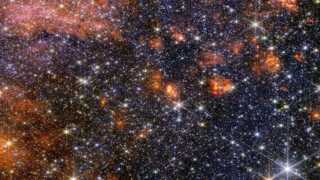Stunning new images from the James Webb Space Telescope (JWST) have just been released, including one of our home galaxy’s largest star-forming regions: Sagittarius B2 (Sgr B2). Located near the galactic centre, some 25,000 light-years from Earth, this monstrous cloud is fuelled by the biggest known population of dense and massive star-forming filaments, unlike many other giant clouds, where a lack of gas means they are less efficient at forming stars. In fact, astronomers believe that a gas filament spiralling in towards the Milky Way is responsible for feeding the new entity.Exploring a Galactic Star FactoryAs per Live Science, Sagittarius B2 is a giant cloud of gas and dust in which new stars are continually forming. Although it contains just a little gas compared to the rest of the galactic centre, it is a star-forming dynamo.Peering Through Cosmic DustJWST can penetrate the thick blanket of interstellar dust that normally obscures activity in the cloud. This mid-infrared panorama has found several scenes of intense star formation that were hidden from view, providing a clearer picture than ever before of this area of the sky and our own galactic neighbourhood.One aspect of Sgr B2 that has been perplexing is why the region continues to produce stars so actively, given the small amount of gas it has left. The reason this small cloud is such a productive star factory could provide insight into the underlying rules of star formation.Lessons for Galactic EvolutionBy watching the stars form in such an extreme environment, astronomers can work together to piece together the larger story of how gas, dust and gravity sculpt not only the Milky Way, but also other galaxies across the cosmos.
Source: gadgets360.com


